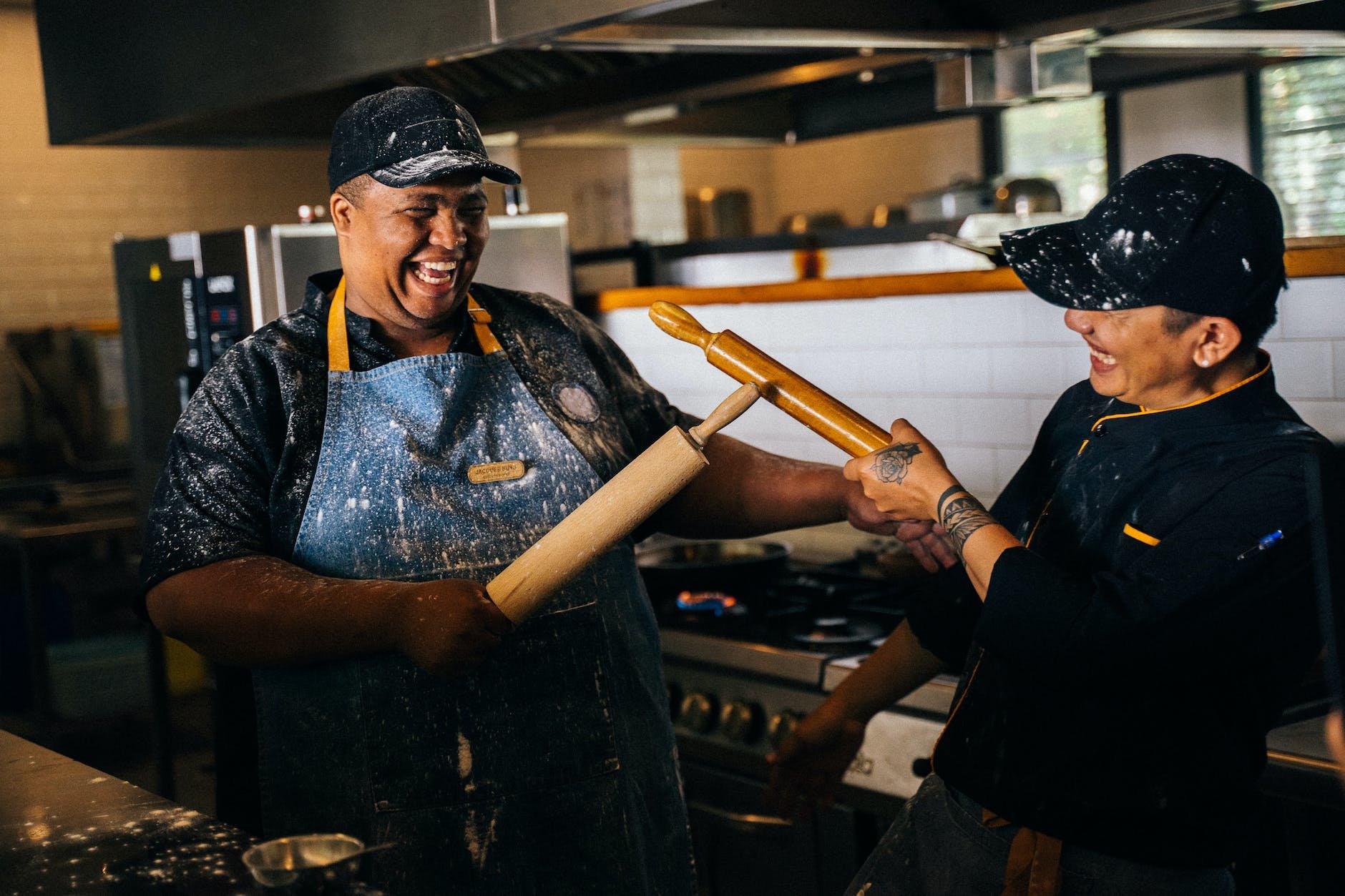Labor shortages are a huge problem in the restaurant industry. This past year, we’ve seen more than just the Great Resignation taking a toll. Restaurant workers are quitting at the highest rate we’ve ever seen, and job openings are getting harder and harder to fill.
In fact, the Bureau of Labor Statistics reports a quit rate of nearly 7% in food service in 2022. This is well over the overall quit rate which hovers at about 4%.
The hospitality industry is struggling to keep up, and if you’re reading this blog post, you’re probably one of those restaurateurs who want to attract and keep employees once and for all.
We have good news for you.
While this is a tough situation for everyone involved, there are steps you can take to fill your job openings and keep great employees around for longer. To start, you first need to understand the reasons why restaurant workers are quitting in droves.
Why Americans aren’t sticking with their restaurant jobs
Service industry jobs are hard, and they’ve only gotten harder since the pandemic.
People who work in restaurants have a lot of valid complaints about the nature of the job. They often spend long hours on their feet, deal with increasingly difficult customers, and struggle to make enough money to pay their bills.
The labor shortage deeply affects those who stay in their jobs, too.
Working an understaffed shift is already tough enough, but as understaffing becomes an epidemic, customers are frustrated at the decline in service levels. Tempers are short. For the first time, restaurants are closing to give their employees a break from demanding customers, and more businesses are begging the public to be kind to their overworked team members.
There’s also social pressure for restaurant workers to change careers. You’ve probably heard comments about how “flipping burgers” is just a starter job for teenagers, right? For all of our efforts to make social progress, there’s still a stigma about being a professional food server.
Add in the rising cost of necessities like food, rent, and childcare, and you can easily see how restaurant employees feel like they have to make a career switch.

The real reasons restaurant workers quit in droves
We just talked about the big-picture problem with the restaurant industry. Now, let’s get specific. These are the biggest factors that will cause high turnover in your local work environment.
1. Low wages and inconsistent tips
Working in a restaurant is already a difficult job, and nobody wants to work hard without getting paid accordingly.
On average, restaurant workers earn in the range of $18,000 to $26,000 per year, depending on where they live. That’s roughly $1,500 to $2,200 per month.
The national average rent price is $1,827 per month.
Some US restaurants have tried doing away with tips to create a fairer pay model, but many of these soon returned to tipping. Increasing prices to cover those costs made their restaurants less competitive. They couldn’t afford to keep their doors open without relying on tips.
Working for tips creates some problems, though. Servers feel like they need to compete for the highest value shifts and tables, and staffing too many or too few servers on a shift can affect everyone’s income.
The increasing popularity of food delivery services has created an income issue for servers, too.
In many restaurants, the waitstaff is expected to pack and manage those delivery orders, and they’re not receiving tips for the time they spend on that work. As many customers order delivery instead of dining in, that’s another blow to an already meager paycheck.
How to deal with wage-related turnover
Even if you desperately want to pay your employees more, it’s not as simple as just increasing your menu prices and offering higher wages.
If you’re going to pay your restaurant employees more, you’re probably going to have to figure out how to reduce food waste, serve more tables, and increase profitability all at the same time.
Adopting a delivery service can be a great way to increase revenue, but be warned: if you add delivery, you should also have a plan to pay your employees for that extra work.
One option to help make tipping fairer for your entire staff is to implement a tipping pool system. This reduces the competition for busier shifts and more profitable tables. It can also help your staff feel more like a team.
Accurate restaurant forecasting can have a significant impact, too.
A good forecasting tool can help you staff shifts appropriately, plan your ordering, and reduce waste. You’ll also be able to spot opportunities to maximize your profits when you’re likely to have spikes in volume.
When you optimize your operations, that can pad your profit margin enough that you can afford higher wages.
On top of pay, perks and benefits are sorely lacking in food service. You can increase your value over and above pay by addressing the next major concern.
2. Nonexistent healthcare and other benefits
Restaurant workers rarely get employer-sponsored benefits like insurance or retirement plans. As a result, restaurant employees have the highest rate of underinsured and uninsured workers.
That means that they’re paying these costs entirely out-of-pocket, which is tough when they’re already not earning enough to pay their bills. Whether they’re paying for private insurance premiums or just covering their medical costs on their own, that’s quite a financial strain.
It’s even more rare for restaurant owners to offer other perks and wellness benefits like mental health coverage or discounts.
Big corporate restaurants like McDonald’s, Chipotle, and Starbucks offer some benefits to their employees, but small business owners usually can’t afford to offer things like tuition reimbursement and paid time off.
So, what can you do?
What to do about benefits
It’s easier and more cost-effective than you think to offer benefits to your employees.
Talk to a local insurance agent about the small business group rates you can get for your restaurant employees. Even if you can’t afford to pay for health insurance on their behalf, you can probably help them get a more affordable rate on a group plan.
Make sure you talk to your employees about what they want and how you can support them. In some cases, your workers may have low-cost insurance plans that are only available to them because you don’t offer a plan.
Consider the cost of turnover and decide whether you’ll come out net positive if you invest in a health insurance plan for full-time employees.
Also, look for less traditional benefits that are particularly interesting to restaurant workers, like transportation stipends, discount programs, and performance-based bonuses.
3. Tough working conditions
For people who work in a restaurant, work-life balance can be difficult. Restaurant schedules are based around the times when most people want to do leisure activities, so your employees are probably working when their friends and family have time to connect.
Plus, working in food service is physically demanding. Workers spend hours on their feet with few breaks.
We’ve already talked about how stressful it can be to manage customer expectations in the midst of labor shortages.
On top of all that, there could be culture issues at your restaurant, too. It’s hard to work with others who are tired, frustrated, and feeling trapped. Negative attitudes are contagious.
Creating better working conditions in your restaurant
Improving your work conditions is highly subjective. It depends on what’s causing the issue in the first place.
Is your biggest issue understaffing? You may need to use forecasting tools and optimize coverage on busy shifts, while slower times get less coverage.
Are customer attitudes a big problem? Make sure you stick up for your employees and protect them as much as possible from rudeness and abuse.
Maybe supply chain issues and equipment problems are making everyone’s jobs harder. Invest in fixing what you can and make adjustments to your menu and procedures as needed.
No matter what, it’s important that you stay positive and offer lots of praise and encouragement. Recognize your people when things go well.
Openly communicate about what you’re doing to address bigger issues like missing supplies and aging equipment. You should invite your team to offer ideas and solutions, both because they have great ideas and because your attention helps with this next issue. Learn more about improving internal communication in a restaurant.
4. Feeling trapped in a “dead-end job”
Realistically, do your employees have any room for advancement?
The best and brightest want opportunities to grow. They have ambitions.
But it’s hard to stay motivated when you can’t see any path forward from where you are now.
If you’re losing your best employees to bigger restaurants with more opportunities for advancement, a lack of opportunity is probably one of your key problems.
The trapped feeling can also come from feeling exploited. Lack of recognition, not having a voice, and being worked too hard without appropriate compensation make people feel like they’re being used.
Remember that restaurant work already has a stigma as a dead-end career. You might have to work harder to overcome that impression.
How to address that hopeless feeling
People need something to work towards, so make sure there really is room to grow. A Lumina Foundation study found that each dollar spent on workforce education not only pays for itself but also saves an additional $1.29 in talent management costs, achieving a 129% ROI.
If you have opportunities for career advancement and people are still leaving, it might be time for a structured training program that clarifies where employees can go and how they can get there.
Offer mentorship in all areas of the business — marketing, inventory management, finances, all of it — and continue offering on-the-job training that can help your team earn more money from tips.
You’ll get two big benefits out of this approach:
First, your people will feel more connected to the overall business and care about the success of your company.
Second, and perhaps more importantly, you’ll have more smart people who can help you solve sticky problems in creative ways.
5. Poor communication and lackluster leadership
You’ve heard the saying: people don’t quit bad jobs; they quit bad bosses.
While there are other problems, that’s still resoundingly true in the restaurant industry.
A common complaint is that restaurant managers are unsympathetic, overly demanding, and poor listeners. Employees feel like they’re being overworked and under-appreciated.
There’s a big emphasis on leadership skills in other industries, but restaurateurs often focus more on operations over people.
You don’t know what your employees are upset about until you ask them and actually listen to their answers. If you hear complaints in passing, just imagine what other issues you’re not being told about. Learn about the traits of a good restaurant manager.
Improving your communication and leadership skills
This might be one of the toughest things on this list because it takes a lot of emotional maturity to ask people what you’re doing wrong and listen for honest answers.
However, it’s also one of the most powerful tools in your toolkit. Nobody is going to tell you exactly what will drive your employees to quit except your employees.
Consider using an anonymous feedback system to give people a risk-free way to tell you what’s on their minds. Then, you had better actually do something with that information. Make sure you address it quickly and publicly.
Express appreciation, not annoyance, and those responses. It’s hard to be honest with the boss. Praise the people who have the courage to help.
Make sure all other communication channels are clear and open, too.
People should be able to request schedule changes, know about important updates, and bring things to your attention. A pre-shift meeting is a good way to get everyone on the same page before they start, and you can use good restaurant scheduling software to help information flow freely.
6. Personal reasons
The reality is that food service is a transitional career for a lot of people. They’re working in a restaurant for the flexibility to go to school or build their side hustle into a profitable business, or they’re trying to make extra money for a specific goal, or they’re working for you while they apply for a more competitive, higher-paying job in a completely different industry.
While there are people that see restaurant work as a fulfilling, long-term career, that’s not the case for a huge portion of service workers.
You don’t need to stop people from moving on.
The best thing to do is to be happy for your team members who made another step forward in their personal priorities. Remember, the way you treat these people is visible to all the others still in your employ, and genuinely supporting those who leave for their own reasons will help everyone else feel supported and appreciated, too.
A few final thoughts about restaurant worker retention
When profit margins are tight, and turnover rates are high, it’s hard to commit to anything that involves spending more time and money on staffing.
However, investing in people is one of the most important moves in the restaurant business.
We’ve all seen how labor shortages and the Great Resignation have forced so many restaurants, from fast food to fine dining, to close their doors. It’s a tough decision when you have customers lined up to buy and nobody behind the counter to serve them.
The past year has been difficult for everyone, and your employees are having just as hard of a time as you are. This year, treat your workers like teammates. You all need your restaurant business to succeed, so get cooperative and tackle these issues together.

Kitty has more than a decade of experience writing about technology products. As a long time content marketer and freelance writer, she's explored hundreds of topics with a special focus in software. When she's not at her computer keyboard, you can probably find her on the dance floor; she is an avid west coast swing dancer and teacher.
More about the author